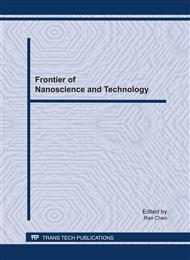p.471
p.479
p.485
p.490
p.497
p.502
p.508
p.513
p.518
The Electrostatic Tangential Resistance of the MEMS Moving Plate with Bumps Considering the Edge Effects
Abstract:
Friction force is present in most microelectromechanical systems (MEMS), since they have a large ratio of surface area to their volume. To improve the performance and reliability of MEMS devices, it is necessary to fully understand the effect of friction which exists in the majority of MEMS. For the MEMS’s moving plate with bumps, the model of electrostatic tangential force is established based on the rule of energy conservation, and it is further revised considering the edge effects by the conformal mapping method. Three types of the electrostatic tangential resistance of the MEMS’s moving plate with bumps, which are the unrevised theoretical value and revised theoretical value considering the edge effects and simulation value, were compared. The effects of the applied voltage, the rate of all micro bumps projective area to the moving plate area, and the relative surface roughness are investigated, and the electrostatic tangential resistance between two charged moving plates with respect to each other is analyzed. It is found that the three types of the electrostatic tangential resistance will be increased with the increase of the applied voltage. The revised analytic results considering the edge effects are larger than the ones not revised, and the former are close to results of ANSYS simulation.
Info:
Periodical:
Pages:
497-501
Citation:
Online since:
July 2011
Authors:
Price:
Сopyright:
© 2011 Trans Tech Publications Ltd. All Rights Reserved
Share:
Citation:


